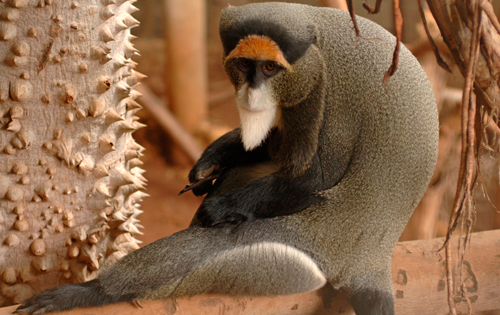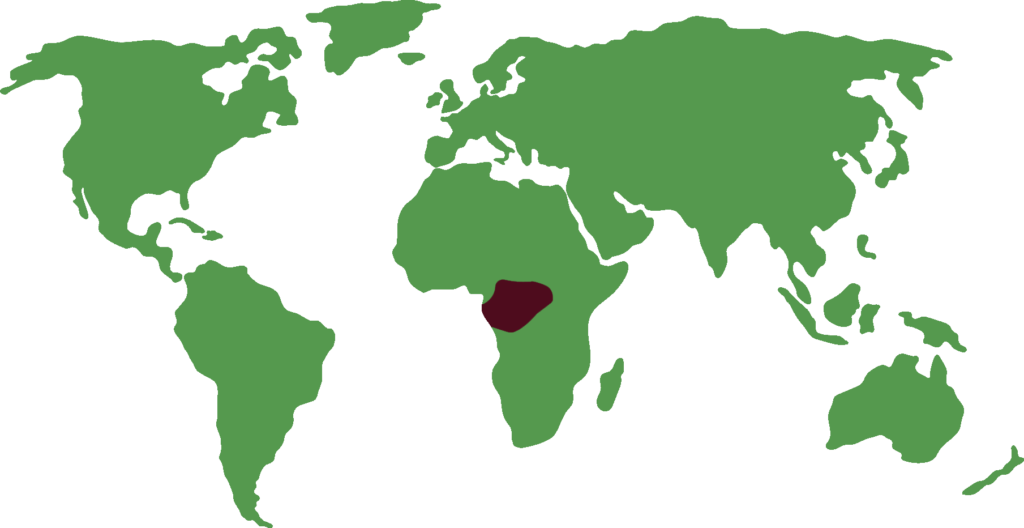DE BRAZZA´S GUENON
Cercopithecus neglectus

LENGTH

60 cm
WEIGHT

7 kg
LIFESPAN

30 years
De Brazza´s guenon or De Brazza´s monkey, is a species of catarrhine primate from the family Cercopithecidae.
General characteristics
You can easily tell whether a De Brazza´s Guenon is male or female. There is quite a big difference in size between the two. Females measure about 40cm and weigh 4.5kg while males measure up to 60cm and weigh around 7kg, almost twice more.
Their fur is usually dark gray except on the back, which is reddish brown, and on the limbs and tail, which are black. On the face, they have a reddish forehead and a long white beard that gives them the characteristic “bishop” appearance.
Both sexes have dilatable cheek pouches that they use to carry food while foraging.
Feeding
Their diet consists mainly of fruit, leaves and tender shoots, although from time to time they also eat insects and small vertebrates.
Behaviour
This type of monkeys are quiet animals. They have a lifespan of 25 years and spend most of their time in the branches of trees, where they can remain still for up to 5 hours.
They are grouped in families led by the male who may have one or more females. They communicate with booming sounds. They are usually heard early in the morning when the male calls out to establish his territory, although he will also use this call to rejoin the group if they become separated.
Reproduction
Females reach sexual maturity at about 5 years of age, while males do not reach maturity until about 6 years of age.
Their gestation period lasts between 5 and 6 months and only one calf is born at each birth, which is cared for exclusively by the mother.
Threats
De Brazza´s Guenon have still a stable population, but agricultural needs and living space requirements for a growing human population have resulted in fragmentation of their habitat.
Distribution
They are from central Africa and they usually live in tropical rainforests and in wet and swampy areas.

Did you know?
They are very good swimmers. They can stay submerged under water and swim for long distances.
They rarely emit call or alarm sounds and actively avoid contact with other animals.
They camouflage themselves among the foliage to hide from predators.
Conservation status
